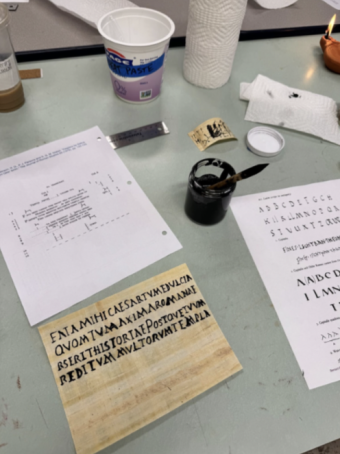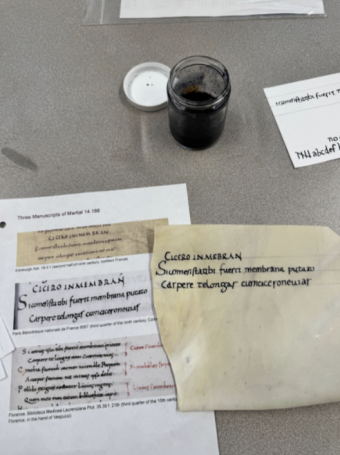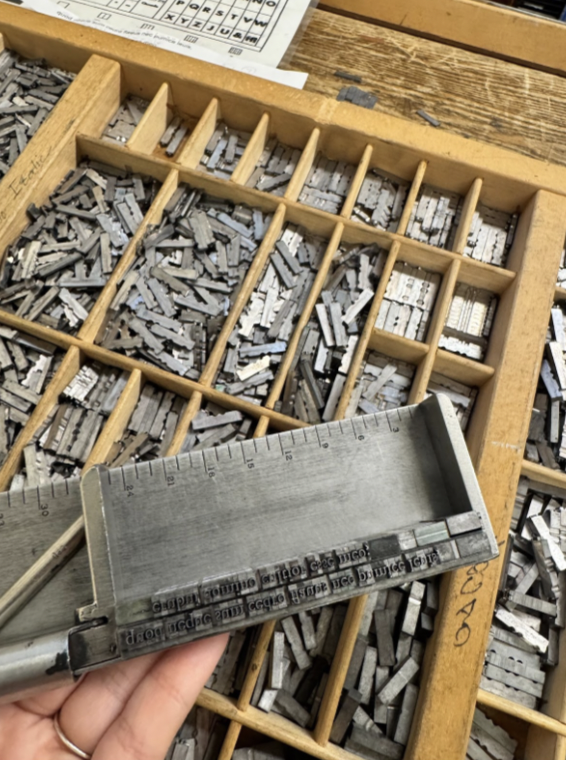
Book Arts Workshop
I can't believe it took me four terms to discover the most magical little corner on campus: The Dartmouth Book Arts Workshop. Located next to the Orozco murals in the lower level of Baker Library, this cozy set of rooms quickly became my favorite place!
As part of my Latin 10: The Landscape of Latin Literature course this fall, my classmates and I visited the workshop for several sessions throughout the term. I hadn't taken a class at Dartmouth with an "artsy" component before, so I was a bit nervous at first. Thankfully, both my professor and the workshop staff were super supportive, allowing us space to learn while offering much-appreciated guidance at every step of the way.
Studying a so-called "dead" language can sometimes feel abstract, so I appreciated the opportunity to connect physically with what we were learning. Before our first visit, a few students made iron gall ink which we used to write with a stylus in two different hands. This hands-on (get it?) experience gave us a deeper understanding—and greater appreciation—of the painstaking work scribes once did!


The next visit was equally fun, as we tried to create "forgeries" of a few Latin lines using the same ink, but this time with quills. I think I still need a little more practice before I can pass off any of my work as an original!
My favorite sessions were those dedicated to our final project: creating single-quire books featuring selections from Ovid's Tristia. Each student drew a couplet at random and brought it to the workshop, where we set type and made proofs to check for errors. Once everyone was satisfied, we combined the lines, set up the pages, and printed the folios over two days. It was a lot of work, but so rewarding! Plus, getting to know my classmates during the slightly repetitive process made it even more enjoyable.

As a self-proclaimed book nerd, I found every element of this project fascinating. If I had to pick a favorite part, it would be sewing the book and adding the finishing touches. Having a tangible manifestation of what I learned in Latin is incredibly special—I'll keep it forever.
In addition to providing support for curricular projects, the Book Arts Workshop offers free open-studio hours, classes, and special events for the community. There's free-to-use equipment and support for letterpress printing, bookbinding, and both digital and analog design projects. I hope to create an extracurricular project there in the future and bring some friends along to share the experience!
I'm also looking forward to taking Latin Manuscripts and Paleography in the spring. This Humanities Lab course emphasises hands-on learning and skill-building, and will include more time in the Book Arts Workshop and feature guest lectures on various aspects of book-making. Until then, I'll be eagerly awaiting my next visit!

















